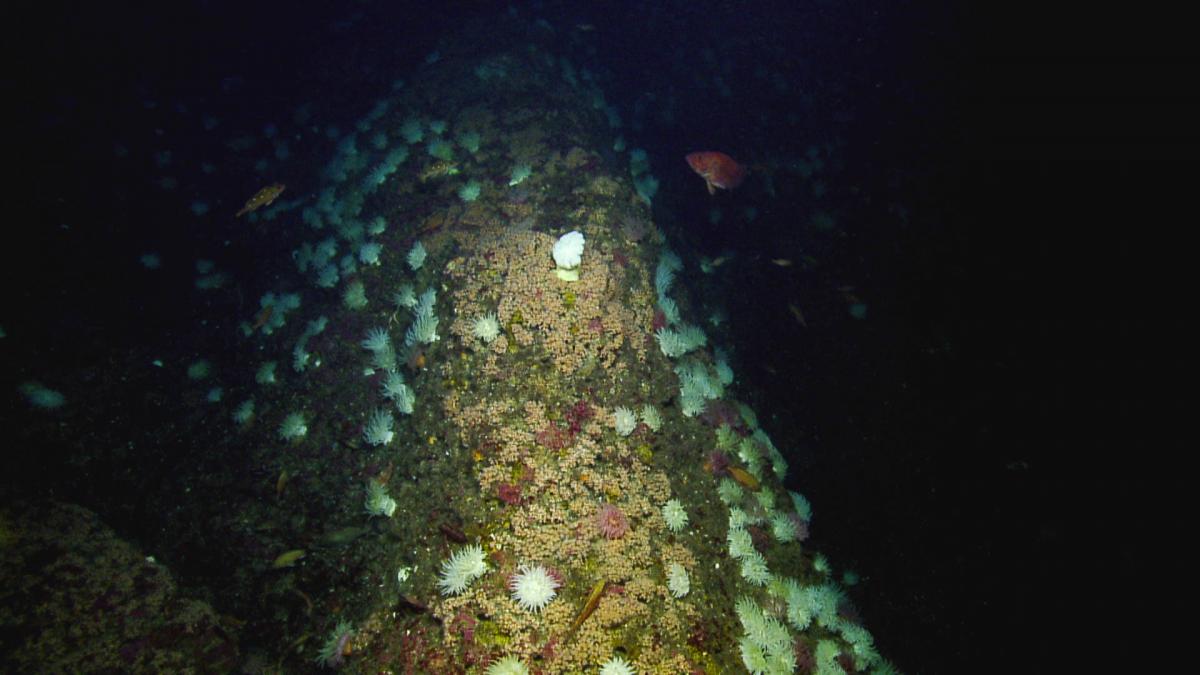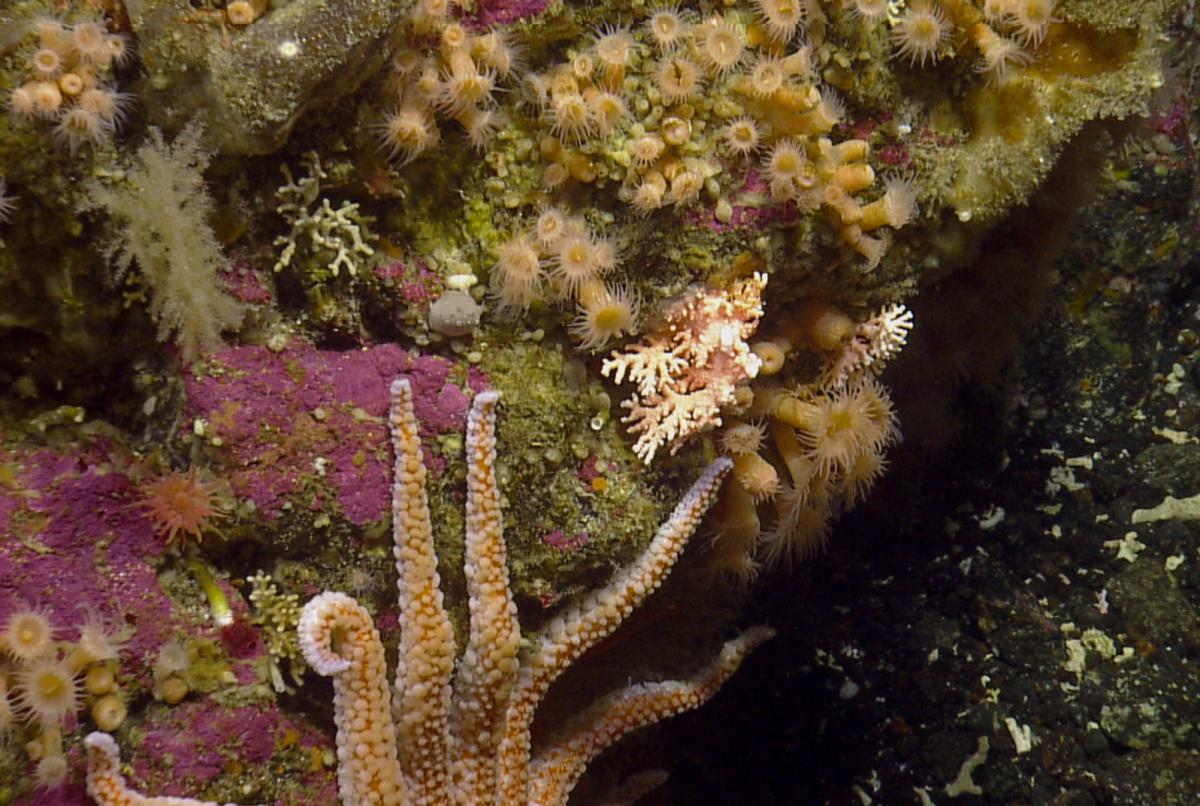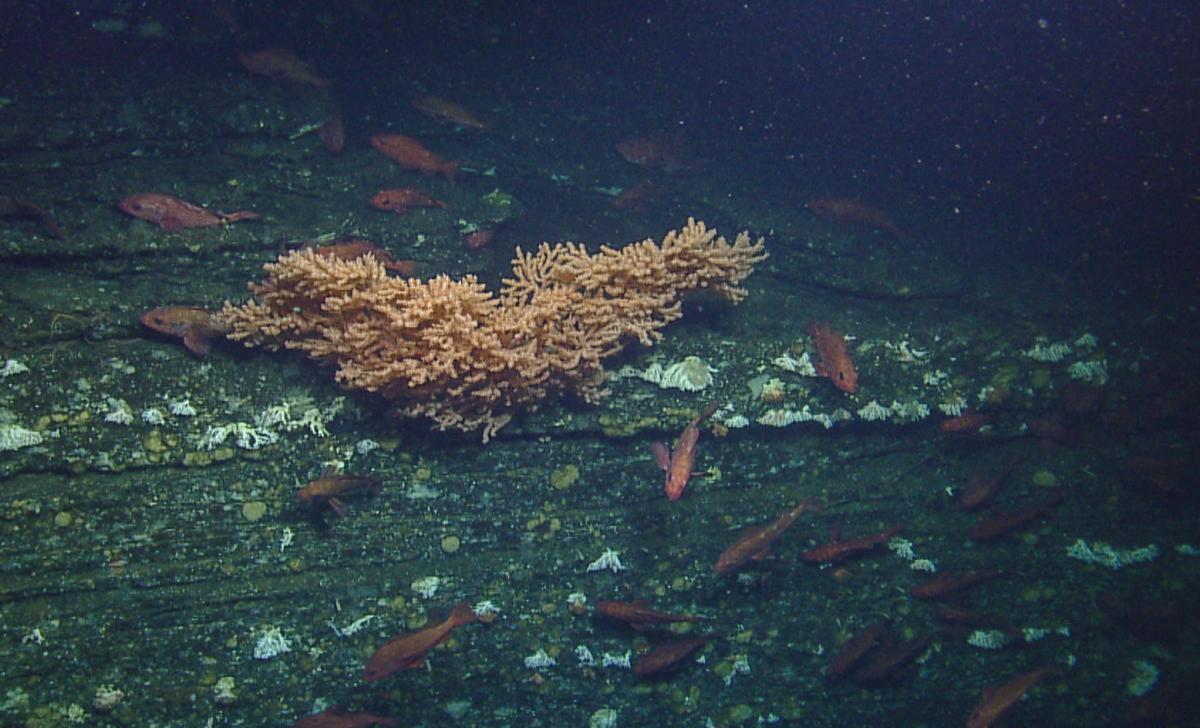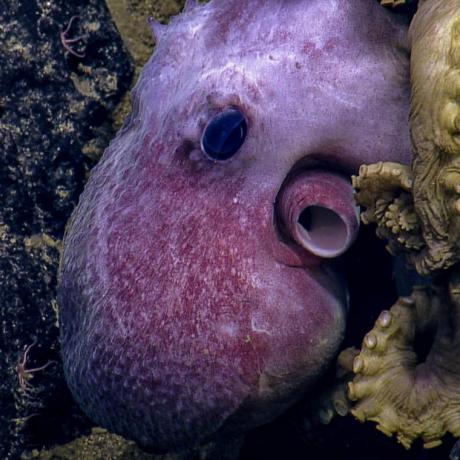July 25, 2018
Murky waters no more: new discoveries lead to a protection call for seamounts in Canada
Estimated reading time: 0 minutes
We’re back from our expedition to the northeast Pacific seamounts off the coast of British Columbia. It was an incredible 16-day, 2,500 km journey with the Haida Nation, Ocean Networks Canada and Fisheries and Oceans Canada aboard Ocean Exploration Trust’s vessel EV Nautilus.
What we saw was awe-inspiring. The surfaces of these extinct underwater volcanoes looked like the ancient explosions and lava flows were frozen in time: waves, ripples, lava pillow formations and boulder fields were colonized by an amazing abundance of marine life.

The expedition team mapped the seamounts at night and while we travelled, unravelling the truths of the mysterious mountains deep below us. We used a multi-beam echosounder to map a total of 13 seamounts, six were new discoveries. The newly mapped areas revealed more living space for species like coral and sponges, which create important habitat for marine life and contribute greatly to overall ocean health.
By day, the remotely operated vehicles, equipped with cameras, mechanical arms and sensors, dove great depths to the base of the seamounts, spending hours climbing towards the peak and discovering everything in their midst. Watching the onboard monitors, it was often like we were entering a forest, only of red tree corals and vase shaped glass sponges. These areas are home to a variety of animals from anemones and feather stars to octopus, lobster and rockfishes.

We are extremely impressed with what we saw, and it makes me wonder how many more of these fragile forests exist in unexplored regions of the ocean without protection?
Currently, 87 per cent of known seamounts in Canada have temporary protection within the Pacific Offshore Area of Interest (AOI). During this expedition, we explored the AOI. We conducted research to better understand this critical marine habitat and support more permanent protection measures, such as moving the AOI to a fully designated Marine Protected Area (MPA).
Our findings make a significantly stronger case for the protection of seamounts. Researchers collected 150 specimens from over 100 species, which may include a number of new species, uncovered more habitat in the deep sea and mapped previously unknown seamounts, significantly expanding the known size and area of these underwater mountain ranges.

What we knew of the seamount range before this expedition was enough to justify protecting it, but with these discoveries we know the conservation value is even greater than we previously imagined. Special places that provide refuge for marine life and strengthen ecosystem resilience are desperately needed in our increasingly threatened oceans. It is clear the best way to manage these biodiversity hotspots is to permanently close all of them to bottom contact activities.
Oceana Canada is now calling for the permanent protection of all seamounts in Canada.

Stay tuned as the seamount science story continues. The data has yet to be fully analyzed and while we have already produced important results, there are many more discoveries to be made from the analysis of the video surveys and specimens sampled. As well, we would like to see future expeditions at the long-term monitoring sites we established, to monitor ocean changes and the effectiveness of MPA management.
The case for seamount conservation off the coast of Canada is strong and the number of ocean advocates is growing. I hope you will join us as we call for the protection of valuable marine ecosystems off all three of Canada’s coasts.
Photo Credit: Ocean Exploration Trust/Northeast Pacific Seamount Expedition Partners

